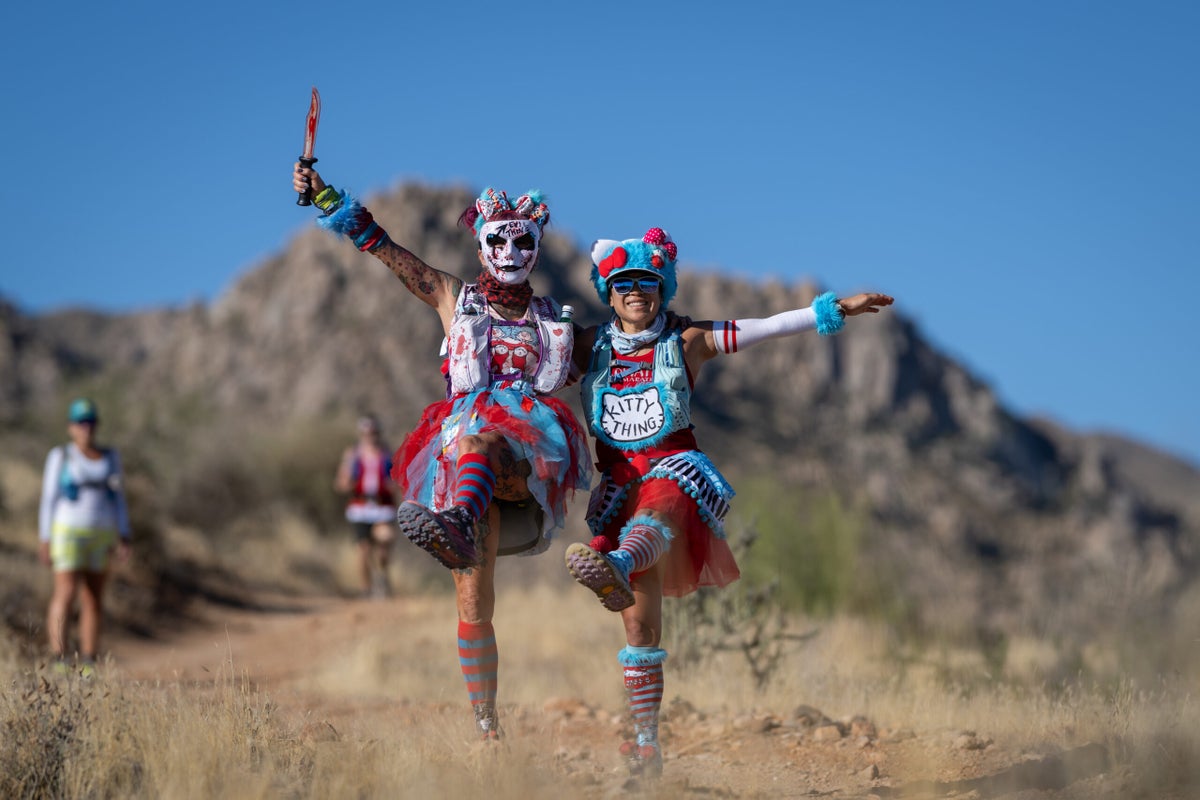
Ultramarathons are the Scooby Doo of the running world. That is, they’re full of mystery.
Running 26.2 miles is insane enough. How are you supposed to run miles further, much less up and down mountains? Add in a costume trunk’s worth of funky gear like running packs, soft flasks, gaiters, and poles, and the whole ordeal can quickly feel overwhelming.
Talking about PRs is pointless because the courses are so vastly different from one to the next. Ultrarunners are ditching gels for Nerds Gummy Clusters. And to succeed at the above marathon distance, it seems, you have to live in the woods, the desert, or the mountains, and only emerge when you need to mooch some WiFi to watch the Western States livestream.
Well, I live in a house connected to the grid and I’m a veteran of ultramarathons. I’ve ran more than 30. I’m also a coach. I’m here to take out some of the mystery of ultramarathons. Here are the most common ultrarunning myths I hear all the time that are just that—not true.
Ultrarunning Misconceptions (and What to Do Instead)
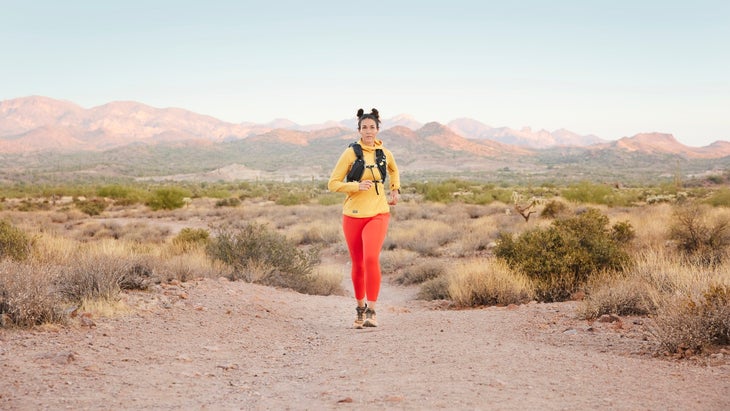
1. You have to run 100 miles per week to run a 100-mile race.
I wrote about this a while back, but it bears repeating: You don’t have to run as much as you think to run an ultramarathon.
In fact, many successful ultramarathoners don’t run an insane volume on a daily basis. They focus on consistency, strategic back-to-back long run days, and fatigue management.
“This is the biggest misconception to me,” Mike McMillan, an ultramarathoner who writes about his dozens of races, tells Outside Run. His longest distance is the 100K, which he has completed twice. “My usual longest run for an ultra is a marathon, either an official race, or I just do the distance on a training run,” he says.
In fact, McMillan generally runs no more than 50 miles per week.
If you’ve trained for a marathon, in other words, you can do an ultra, even those longer than a 50K. And your training doesn’t have to look a whole lot different.
2. Your nutrition plan should be gels plus hope.
Most DNFs come from underfueling, eating too late, or taking in the wrong mix. It’s not from your body being incapable of covering the terrain. But in order to take in enough fuel, you have to train your body to absorb nutrients on the move.
That doesn’t mean you need to rely on gels and drink mixes—in fact, exclusively relying on them could be a recipe for failure.
Alysha Flynn, a running coach with 150 clients and hundreds of thousands of followers on Instagram and TikTok under her business, What Runs You, recommends boiled potatoes with salt, pretzels, peanut butter sandwiches, chips, and ramen noodles.
I love to eat Oreo cookies, quesadillas, and candy. My secret weapon is soda.
“Energy gels, carb mixes, and chews are great,” Flynn, who won her first ultra, a 50K, says. “But they can only take you so far. It’s not just about calories. It’s about variety and digestibility over the long haul.”
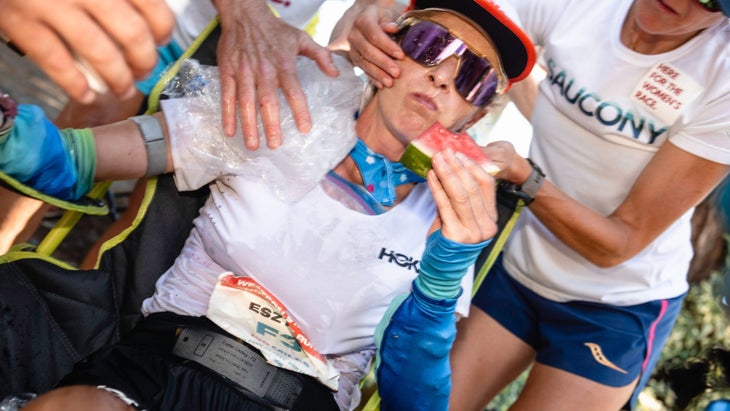
The energy source is secondary to how much you’re taking in, and you may find that mixing it up during the race helps you fuel enough.
Here’s my rule on race day: Eat what sounds good.
You may not want to eat past mile 50, but if someone hands you the best glazed donut you’ve ever had in your life, you’re gonna eat it, and those calories will take you a long way. Do I train with glazed donuts? No, but my stomach has had them a little far too often, if I’m being honest. You’ll eat more, and feel better, eating food you really want to eat instead of choking down another gel. Ultras are hard enough without making eating a chore.
3. You have to run the whole thing.
Ultrarunning is a bit of a misnomer. In pretty much every ultra for pretty much everyone, there is going to be some walking. (What many euphemistically call “power hiking,” although there is a point to hiking with purpose.)
Callie Vinson, a running influencer known for finishing ultramarathons at the caboose end of the pack, completed the Cocodona 250 by running about 0.05 percent of it, she said.
That was probably an exaggeration, and a 250-mile race is on the extreme end of an already extreme sport. But the idea that you have to run a whole race is how a road runner thinks. Even the best ultrarunners hike at times, especially up a big climb. In fact, going 4 mph, or a 15-minute mile, means you’ll run a 100-miler in under 24 hours, an elite time.
My advice for those starting out: Walk the hills, jog the straightaways, and run (but don’t bomb) the downhills.
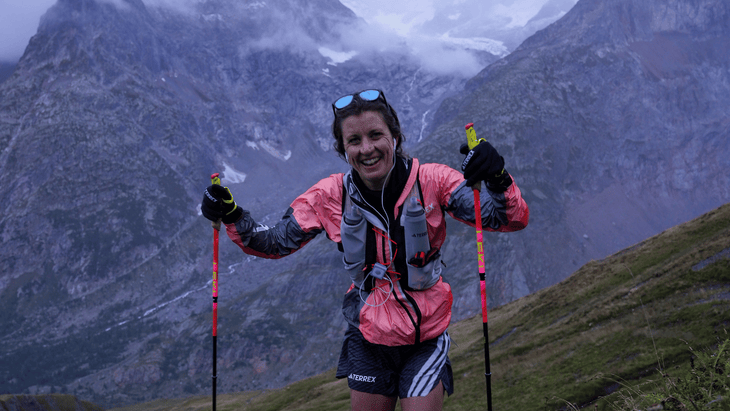
4. You need to run a marathon first.
Here’s a secret: Road marathons are generally harder than trail 50Ks.
“A 50K is easier than a marathon, especially if it’s on a trail without the pavement pounding of a road marathon,” McMillan says. “Plus, the general atmosphere of an ultra should lead to a pleasant experience.”
Running on pavement for four hours would knock me out for a month. I once climbed Colorado’s tallest peak the day after running a 50K. So, no, there’s no rule against doing an ultra as your first really long race.
“As long as the build is gradual and you respect recovery, you can absolutely make the jump sooner,” Flynn says. “The important thing is consistency in training and a solid strength training routine, not years of experience.”
5. You have to race up and down mountains.
If the trails, running at altitude, or running up and down mountains doesn’t sound fun to you, don’t sweat it. “Ultramarathon” just means over 26.2 miles. There’s no rule it has to be on a technical high-altitude mountain route. In fact, there are ultras on the track, on flat dirt roads, and on tiny loops.
Some of these are time-based rather than a set distance, such as 24-hour races. Some races offer a combination of both, such as Across The Years, which features a buffet of set times and distances around a 1.42-mile course.There’s also the Jackpot Running Festival, which takes place on a course a bit longer than a mile.
And then there are backyard ultras, which are exploding in popularity around the world. The premise is simple, if also diabolical: run a 4.167-mile loop every hour, on the hour, until you can’t anymore.
You can find an ultra to fit your style. There are plenty of races over mountains, in the desert, on a beach, on pavement or, as we said, on a track. We haven’t seen one in a hamster wheel, but that doesn’t mean it doesn’t exist.
6. You don’t need to do speed work.
It’s true that endurance, not speed, will get you to the finish in an ultra. But many believe speed work is just as important. The faster you can run, the faster the pace you can hold for an ultramarathon distance. Flynn sees value in speed work such as strides, hill repeats, and fartleks. She also believes there are other priorities.
“Not so much for hitting paces, but for variety, strength, and keeping training mentally engaging,” she said. “Gradual building, time on your feet, and smart recovery are what matter most.”
7. If you feel bad, you’re done.
Before toeing the line, you must come to terms with the fact that at some point in the race—in fact, probably during many points—you will feel bad. You will want to quit. And you will not.
Commit this to memory: You will snap out of it.
Working through the lows, along with the litany of other issues you may have to problem-solve, is exactly why you signed up for this event in the first place. If it was easy, there would be no reason to try.
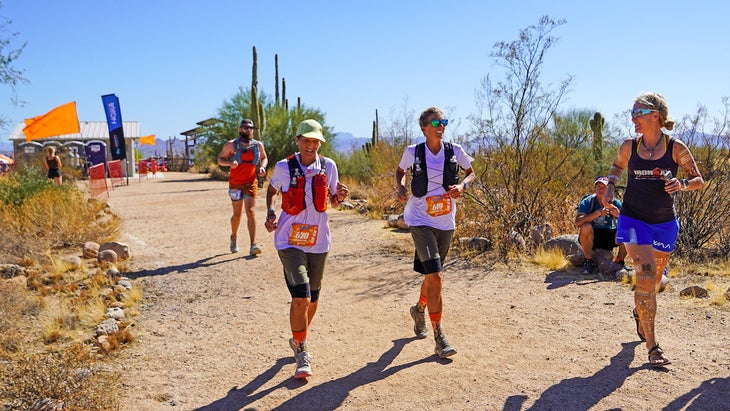
Welcoming the hard moments is one reason Courtney Dauwalter has become one of the greatest to ever do it. It’s what she famously calls her “pain cave.”
“That’s just the visual I’ve built in my head,” she told Outside Run. “I picture putting on a hard hat and grabbing a chisel and seeing what happens. I don’t know if eventually I’ll reach an end of chiseling, or if I won’t be able to mentally convince myself to go chisel more, but for now it just keeps getting bigger.”
When the doubt starts creeping in, slam a gel, a salted potato, or a donut. (Or whatever else sounds appealing. If nothing sounds appealing, slam it anyway.) Focus on execution: putting one foot in front of the next, hydrating and fueling, staying cool (or warm, depending on the circumstances), and taking care of your body.
8. If you don’t finish, you are a failure.
Michael Easter wrote in his book “The Comfort Crisis” about misogis, a daunting annual task that pushes you further than you think you can go. The idea isn’t to finish the task or even come close; the idea is to see how far you get.
Ultramarathons, in my mind, are misogis. They are difficult distances meant to define your ability to withstand discomfort and see if you can improve upon it. Given this, DNFs are not only inevitable, they are an integral part of our sport.
I have finished every typical ultra distance except for a 100-miler. In one attempt, desert heat and bad blisters made me stop at 100K. In another, I fell asleep at mile 70 while running, forcing an end to a real chance to finish. Two other attempts were either cut short or canceled by generational storms, including a hurricane.
I like the medal at the end and the achievement of finishing, and running 50Ks would get me those more than 95 percent of the time. But I like trying to stretch my boundaries. I may not finish the next time I try 100 miles. But I hope I can get past mile 70.
The post 8 Ultramarathon Myths Busted by a Running Coach appeared first on RUN | Powered by Outside.
🏃♂️ Recommended for Ultra Runners
As ultra runners, we’re always looking for tools and resources to support our training and racing goals. Check out this resource that fellow runners have found valuable.
FTC Disclosure: This post contains affiliate links. We may earn a commission if you purchase through these links at no additional cost to you. See our Affiliate Disclosure for details.

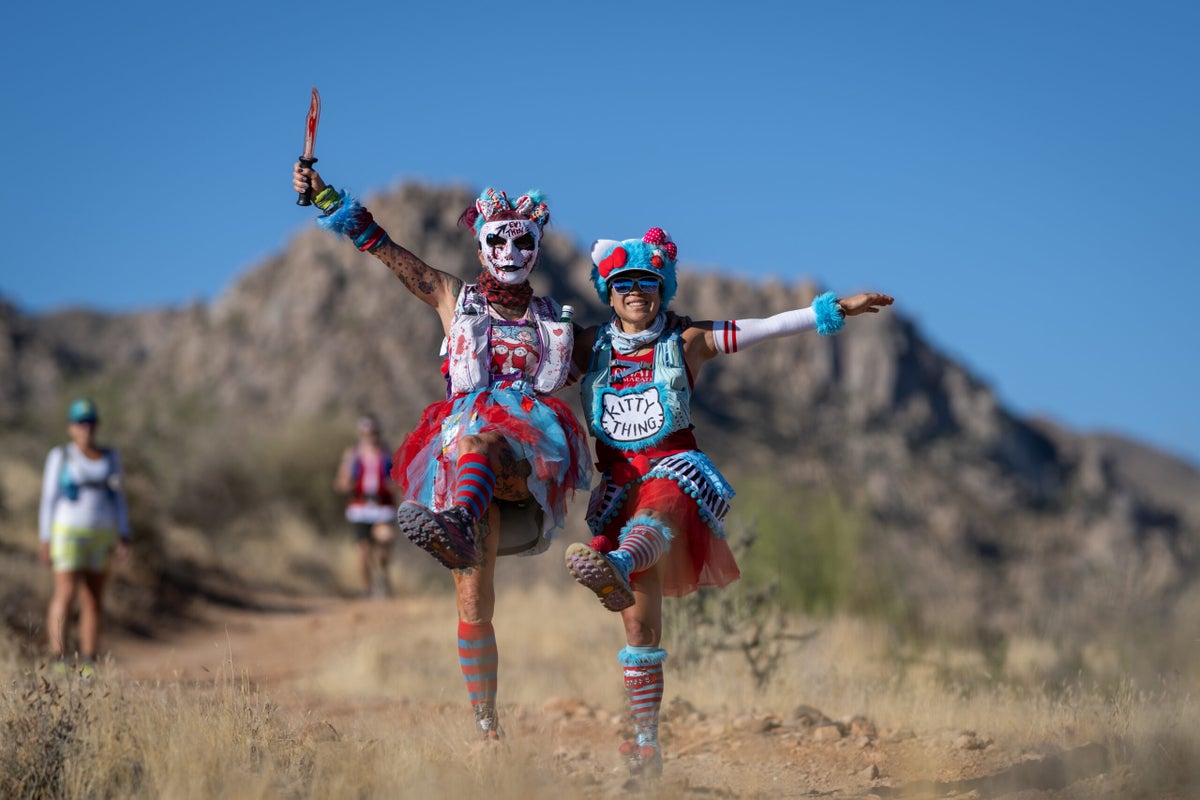
Leave a Reply